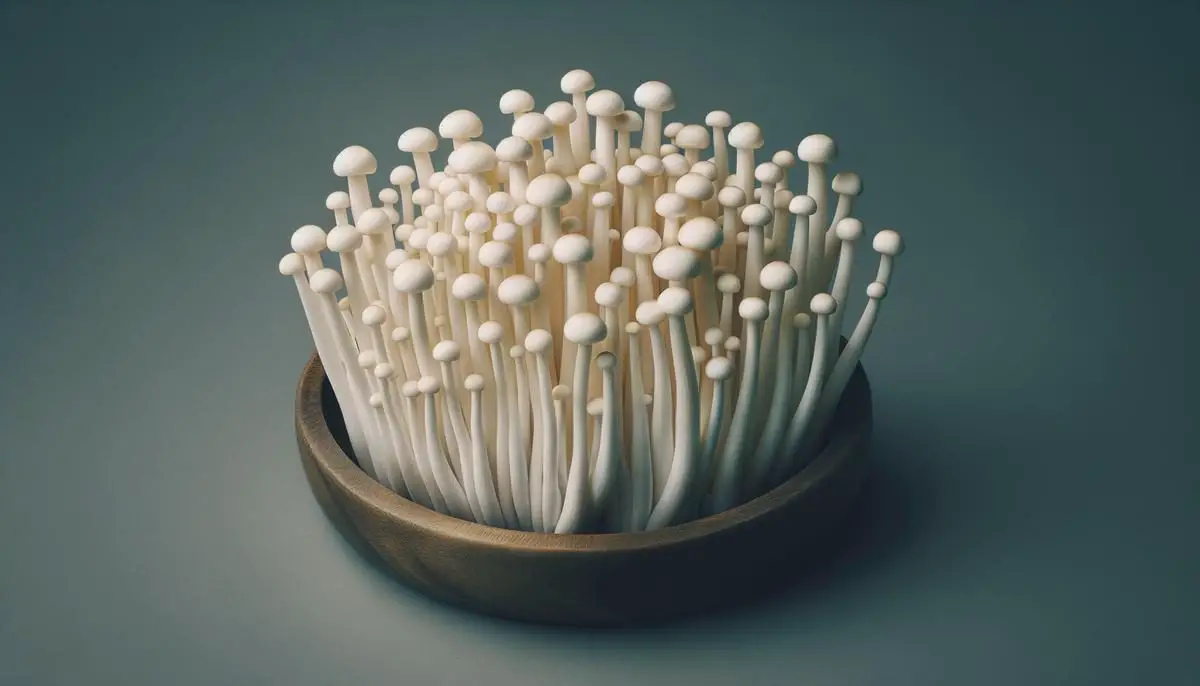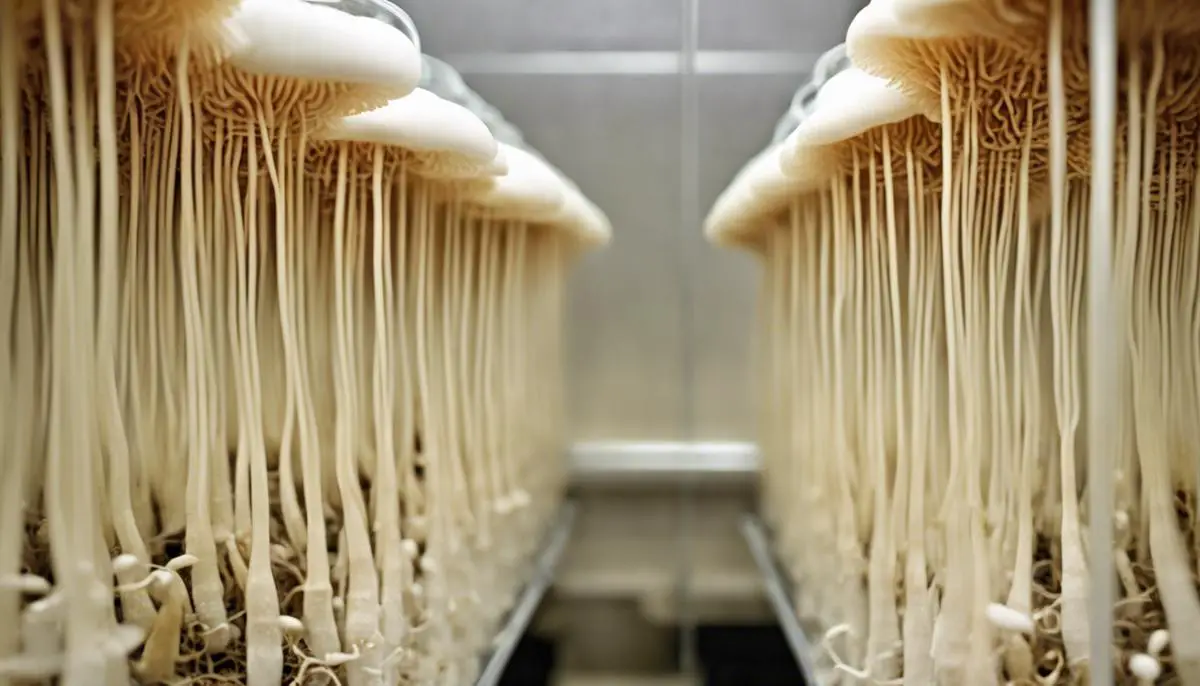
Cultivating Enoki Mushrooms
Enoki mushrooms, those slender pillars of delicate flavor, have undergone quite the transformation from their wild origins. Unlike their rugged, dark-capped ancestors found clinging to the cold, damp bark of trees, cultivated enoki are a study in elegance and uniformity. Achieved through meticulous growth in carbon dioxide-rich, nearly lightless conditions, these creamy white fungi exemplify how human intervention can shape nature's offerings. Encased in bottles to encourage their signature elongated stems and petite caps, they serve as a visual delight and are packed with subtle, earthy flavors that have become a staple in Asian cuisines. The manipulation of growth conditions underscores the fascinating relationship between humans and fungi, creating a product distinct from its wild counterpart.
Cultivating enoki mushrooms at home offers a rewarding endeavor for those interested in the art of mycology. Starting with a spawn inoculated into a suitable substrate, like hardwood sawdust, the grower embarks on a journey of sustained anticipation. Maintaining the delicate balance of humidity and temperature, especially the cooler conditions favored during the fruiting phase, demands attention and patience. The payoff—a crop of fresh, homegrown enoki mushrooms—invites a sense of accomplishment. Offering a crunchy, umami-laden bite to a variety of dishes, from simple soups to elaborate stir-fries, enoki mushrooms cultivated at home promise a culinary delight and a deeper understanding of the relationship between cultivation and gastronomy.

Health Benefits and Culinary Uses of Enoki Mushrooms
Enoki mushrooms, with their delicate appearance and mild, slightly fruity flavor, adorn countless dishes ranging from savory broths to refreshing salads and offer a nutritional punch that complements their culinary versatility. These slender mushrooms, embraced across Asian cuisines, provide a crunchy texture and an umami richness that can elevate nearly any meal. They are especially notable in vegan and vegetarian dishes, where they can serve as meat substitutes, offering a satisfying bite and an appealing garnish. Beyond their aesthetic and taste appeal, enoki mushrooms are a treasure trove of health benefits, enriched with fiber, proteins, and a unique blend of vitamins and minerals, reinforcing why integrating this mushroom into one's diet is not just a culinary adventure but also a step toward embracing wholesome nutrition.
Including enoki mushrooms regularly in your meals is an exploration of diverse culinary landscapes and a commitment to bolstering your health. Packed with antioxidants, these fungi play a crucial role in reducing inflammation and combatting oxidative stress, potentially warding off chronic diseases and fortifying the body's defenses.1 The dietary fibers present in enoki mushrooms aid in digestion and promote gut health, while their low-calorie profile supports weight management strategies.2 Their rich content of B vitamins fuels energy metabolism, illustrating enoki mushrooms as an ally in harnessing vitality and well-being. Given its exceptional blend of flavors, textures, and health benefits, the enoki mushroom stands out as a culinary gem worth exploring in your next cooking endeavor.

In essence, enoki mushrooms embody more than just an ingredient for culinary experimentation; they represent a harmonious blend of nutrition, taste, and the art of cultivation. By integrating enoki mushrooms into our diets, we add variety to our meals and embrace a lifestyle that values wellness, sustainable eating practices, and an appreciation for the relationship between humans and nature.
- Mau JL, Lin HC, Song SF. Antioxidant properties of several specialty mushrooms. Food Res Int. 2002;35(6):519-526.
- Cheung PCK. The nutritional and health benefits of mushrooms. Nutr Bull. 2010;35(4):292-299.



